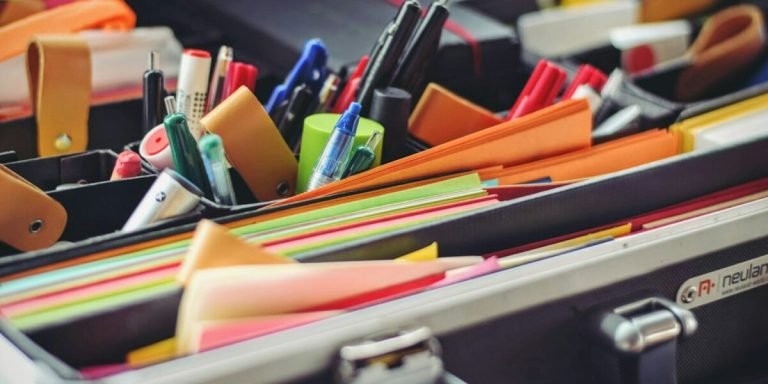Learning Disabilities List: A Comprehensive Guide for Parents and Educators
Understanding and addressing learning disabilities can be a challenging task for parents and educators alike. A comprehensive “learning disabilities list” often serves as an invaluable resource in this process, helping identify potential issues early so as to provide the necessary support.
Navigating through such lists isn’t always straightforward – it’s not just about ticking boxes off a checklist. This guide aims to crystallize complex information into simple terms, providing special education resources that enhance your understanding of different learning disabilities. With knowledge comes power—the power to make sound decisions ensuring every child’s developmental journey is fruitful despite any hurdles they may face along their path.
Did you know?
About 5-10% of schoolchildren have a learning disability, but only a third of them receive appropriate support. (Source: National Center for Learning Disabilities)
Understanding Learning Disabilities: Identification and Resources
The realm of education is continually evolving, more so in the special needs sector where technology integration has become a priority. In today’s digital age, understanding learning disabilities and navigating through them does not remain limited to identifying symptoms or signs. It now extends into harnessing technological advances that can aid in reducing barriers faced by children with learning obstacles.
When evaluating your child for potential learning difficulties such as dyslexia, ADHD, or autism spectrum disorder among others on the ‘learning disabilities list’, using technologically advanced methodologies have proved advantageous- both in diagnosis and intervention strategies. Special Education Resources are being integrated with cutting-edge technology like assistive devices, educational software and apps specifically designed for individuals with unique learning challenges; thus showing significant strides towards achieving equity in education.
A greater awareness paired with resources out there can make an immense difference— parents don’t need to feel isolated anymore given access to various support systems online available round-the-clock at their disposal – ranging from parent forums discussing similar experiences too specialized webinars offering insights into managing different types of disorders effectively. You see it’s all about embracing these advancements while sowing seeds of knowledge – continuously nurturing our wards until they reach their full potential.
Key Indicators of Common Learning Disabilities
In today’s education landscape, understanding and properly diagnosing learning disabilities play a crucial role in ensuring every child achieves their highest potential. When we speak of comprehensive presence of these variations among children – the “learning disabilities list,” it becomes an essential tool for parents and educators alike.
The first step towards helping a child with special needs is timely detection and intervention. Knowledge about key indicators can empower you to recognize common learning exceptions early on.
Let’s dive into some key signs that may suggest your little one could be facing divergent challenges related to auditory processing disorder (APD). A student displaying difficulties following directions or distinguishing between similar sounds might have APD. Another red flag would be trouble maintaining concentration amidst distractions—indicative circumstances worth noting down.
Children struggling with dyscalculia often represent another classic case from our ‘learning disabilities list.’ Spotting telltale signs here includes observing inconsistencies when dealing with fundamental number sense, grasping time-related concepts or executing strategic reasoning tasks expected at their age level.
Similarly, Dysgraphia affects writing ability where kids show reluctance towards written assignments or extreme struggle overlapping letters while writing despite consistent practice sessions over time—a sign warranting attention.
Then there are instances concerning Dyslexia exhibiting observable patterns like slow reading speed, recurring spelling errors & difficulty comprehending text readings—an all-too-common plight seen amongst many young learners inevitably affecting self-esteem if not addressed promptly.
Essential Assessment Tools for Accurate Diagnosis
Accurately diagnosing learning disabilities from an early stage is a crucial part of ensuring that your child or student reaches their full potential. This includes maintaining a keen awareness and understanding of various types of disorders, as indicated by the “learning disabilities list.” However, how can parents and educators ensure they’ve identified these issues correctly?
The answer lies in utilizing essential assessment tools designed to provide precise diagnoses. In 2023’s technological age where integration into education has become more prevalent than ever before, using technology-based diagnostics offers multiple advantages.
Firstly, it provides faster results compared to traditional methods. Advanced software can swiftly analyze data inputted by teachers or healthcare professionals with quick turnaround times for diagnosis reports.
Secondly, it reduces human error significantly which often occurs in manual evaluations due to biased judgment or mere oversight; technology delivers calculations based on concrete facts.
Some leading-edge online resources currently available include BrainCheck (a cognitive testing suite) , Q-interactive®(offers unique clinical assessments incorporating broad spectrum neurodevelopmental conditions), Pearson Clinical Assessment(the industry leader providing diagnostic solutions).
Educational Strategies Tailored for Specific Learning Disabilities
Understanding every child’s unique learning style is the cornerstone of effective teaching, especially when it comes to students with specific learning disabilities. In this digital era where technology has been seamlessly integrated into education, special educational resources and support have evolved tremendously. There’s a broad spectrum of technologically advanced tools available that teachers can utilize in tailoring their approach towards children with different types of learning disabilities.
Educational strategies now specifically tailor to learning disabilities, and they incorporate innovative technological solutions beyond traditional methods. Children who struggle with dyslexia or expressive language disorders benefit greatly from assistive technologies like text-to-speech software and augmentative communication devices. Additionally, software programs designed to improve visual perception skills are essential for students with nonverbal learning disabilities. These programs break down complex concepts into manageable chunks using easy-to-understand graphics.
Individualized Education Programs (IEPs): Crafting Success Plans
Every child learns differently. Certain barriers may impede their learning experience, with specific learning disabilities topping the list. When identifying these difficulties using a detailed “learning disabilities list”, an Individualized Education Program (IEP) comes into play as it tailors educational strategies to each child’s unique requirements.
An IEP is more than just an official document; it’s a roadmap steering all stakeholders—educators, parents and specialists towards the shared goal of facilitating effective educating for students facing obstacles in traditional academic settings.
The integration of technology within primary and secondary education systems marks one of the significant advancements in recent years. It aims to maximize inclusion and effectively address special needs. Here are some ways this combination works wonders:
1. Customizable Educational Content: Contemporary edtech platforms leave room for customization based on individual abilities ensuring every student gets what they need out of their education system.
2. Barrier-Free Communication: For children who struggle with verbal communication due to cognitive issues or physical impediments, assistive technological tools transform abstract concepts into simpler comprehensible formats boosting understanding capacity significantly.
3. Interactive Learning Opportunities: Gamified lessons serve two purposes – making subjects less monotonous leading to increased participation from young learners alongwith strengthening memory retention through repetitive gameplay patterns mimicking real-world scenarios closely.
4.Enhanced Assessment Tools : Diagnostic software greatly assists educators by providing precise metrics related to progress tracking reducing guesswork when gauging overall development levels thereby allowing timely interventions if necessary.
Innovative Teaching Techniques for Enhancing Learner Engagement
When it comes to navigating the landscape of childhood education, particularly for children with learning disabilities, innovative teaching techniques stand as a beacon of hope and progress. A sense of engagement is crucial in any classroom but holds even greater importance when educators are striving to connect with students who face unique challenges.
In 2023, we witness an increasing integration between technology and special educational resources providing immense benefits. Children on the learning disabilities list often find conventional methods less effective; however, our rapidly advancing technological world has opened doors for alternative approaches designed specifically for these learners’ needs.
To enhance learner engagement significantly among children included in the learning disabilities list , one key strategy employed by many educators today includes integrating game-based learning into their curriculum. This technique leverages student interest in gaming while simultaneously offering opportunities to understand concepts better through immersive experiences.
Another approach that has proven equally transformative stems from Augmented Reality (AR) tools tailored towards crafting more interactive lessons full stop . The element of interactivity provided by AR aids children grappling with different difficulties such as dyslexia or ADHD achieve improved focus during classes successfully navigate complex topics .
Support Systems and Advocacy for Students with Learning Challenges
Support systems and educational advocacy are crucial tools for students grappling with learning disabilities, particularly in the era of technology integration. As we embrace 2023, advancements in tech have spawned a myriad of solutions that bring transformative change into classrooms, offering unique learning avenues to those who learn differently.
The scope of ‘learning disabilities’ is broad-based and includes conditions such as dyslexia, ADHD, autism spectrum disorder among others. It’s vital to understand this diversity because each disability presents specific challenges needing individualized strategies within an inclusive education framework. Technology can play a versatile role here by facilitating tailored support while promoting inclusivity.
For instance, speech-to-text software has revolutionized communication pathways for those struggling with language disorders or auditory processing issues – making digital lessons considerably less challenging. Screen readers lend autonomy to visually impaired learners whereas apps focusing on behavior management help children manage impulsivity associated with ADHD better.
Whilst advocating for students battling through their list of struggles linked to learning disabilities remains paramount; continued research and technological innovation serve as powerful allies too.
Coupling special education resources like IEPs (Individual Education Plans) along stringent laws protecting disabled student rights ensures effective support mechanisms at school level.
Building a Network of Support: Parents, Teachers, and Therapists
Building a network of support for children diagnosed with learning challenges is pivotal in ensuring their academic success. With the rising prevalence of diverse learning disabilities, it’s essential to consider comprehensive methodologies that take into account parents, teachers and therapists’ roles.
Parents are often on the frontline when dealing with their child’s diagnosis. A clear understanding of these impairments from a “learning disabilities list” allows them to advocate and provide suitable home-based solutions effectively. Parent participation not just extends beyond assisting homework but includes creating an encouraging environment at home tailored towards individual needs.
Teachers form another crucial part within this spectrum as they bridge gaps between knowledge acquisition and application in real-world scenarios through customized educational plans targeted at enhancing strengths while addressing weaknesses simultaneously.
To better implement such personalized strategies inside classrooms, schools now increasingly rely upon specialized software applications designed specifically for students who feature high on any conventional ‘learning disabilities list.’ EdTech sets out pathways impregnated with resilience mechanisms helping overcome potential hurdles en route cognitive development milestones.
Legal Rights and Educational Policies Impacting Special Education
Today in 2023, children identified under the “learning disabilities list” are protected by a host of laws designed to ensure they receive appropriate support within an inclusive educational setting. It’s important that we recognize these mandates have been put into place not only as safeguards but also as catalysts for progress.
The Individuals with Disabilities Education Act (IDEA), enacted in 1975 has evolved over decades and today it stands tall protecting the rights of millions of students nationwide. Under IDEA, every child diagnosed from the “learning disabilities list” is entitled to free public education tailored around their unique needs – known as an Individualized Education Program (IEP). This law emphasizes parent involvement and encourages schools towards inclusion while focusing on improving outcomes.
Section 504 of Rehabilitation Act strengthens IDEA by prohibiting discrimination based upon disability primarily offering protection against exclusion whilst emphasizing equal opportunity regardless of one’s ability or inability – thus fostering inclusivity at its best!
Translating more recent advancements into special education practice involves embracing technology integration on multiple fronts; be it adaptive software applications helping overcome academic hurdles or assistive devices aiding communication roadblocks. Smart classrooms equipped with interactive whiteboards catered towards kinesthetic learners can indeed change paradigms enabling all-round development amongst challenged learners.
Conclusion
In the complex world of childhood education, understanding different learning disabilities can be overwhelming. This comprehensive ‘learning disabilities list’ was intended to simplify things for you and provide a clear perspective on how diverse these disorders can be. It’s essential that we remember every child learns in their own unique way; some just require more tailored approaches than others.
As parents and educators, our role is to guide children through this journey with empathy and patience. Our website offers extensive resources aimed at helping kids thrive despite any educational hurdles they may face. Continue exploring here – let’s help all youngsters shine brightly in their academic pursuits!
There’s plenty more knowledge waiting for you across numerous topics related to teaching children effectively – after all, being informed means being prepared!







